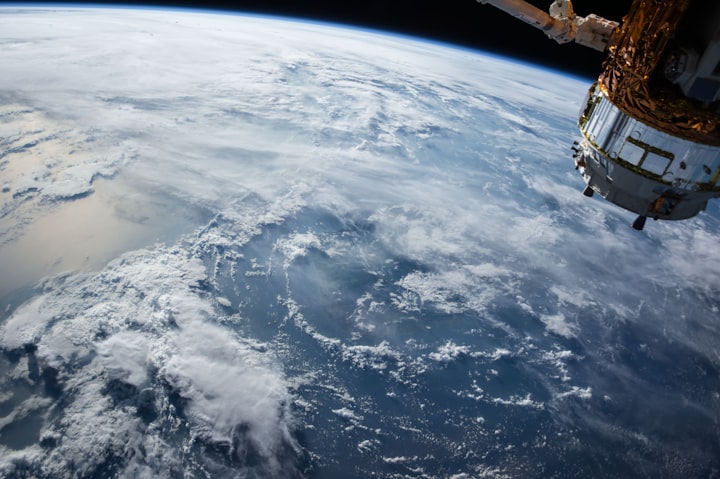Upcycling, an incredible way up the landfill
Fast Fashion and Construction are threatening our ecosystems at an exponential rate. Local communities and individuals across the globe have been integrating both these industries’ evils to sort out an up-cyclable solution that can change the way we look at waste altogether.
Earth. The only planet known to sustain life in the entire cosmos. With a population close to 8 billion, the one thing that unites us all is that we are ‘human’. But the pertaining question today is, are we really?
From snow-capped mountains, luscious green forests, rich biodiversity and crystal-clear waters, the scenery has changed radically into mounts of landfill, extinction of species, innumerable wastelands, impotable water and air that is simply not fit to breathe. Humankind has single-headedly put ‘sustenance’, the very first meaning of Earth, to question.

Globalisation, Industrialisation, Urbanisation are the irrefutable trinity of human progress. But with this, consumerism has taken a calamitous leap.
Let’s talk statistically. The Construction industry generates one-third of the world’s waste and 40% of the world’s CO2 emissions. 100 billion tonnes of raw material is extracted from the Earth, half of which builds the world’s infrastructural ecosystem.
The transport and the energy industry are the principal polluters that have been the talk for decades, but what about the business thriving due to the unnecessary fashionable greed?
Fashion is responsible for 10% of the over-all CO2 output, which according to the UN Environment Programme, easily surpasses the global freight emissions. More so, it contributes to one-fifth of the 300 million tons of total plastic production yearly. McKinsey and the World Economic Forum report that garment production has doubled since 2000. It is only 13% of the total discarded textiles that gets recycled today and the rest gets incinerated or ends up filling the landfills. This industry has taken water bodies by the throat, with dyes, toxic chemicals, microfibres, and microplastics, deteriorating the marine life. Water is used at every stage of the fashion industry value chain to the point that the UN estimates that 80-90% of this polluted water comes back to the environment untreated.
Why are the Construction and the Fast-Fashion industry the talk today?
FabBRICK is a French company founded by Clarisse Merlet, an architecture student who recognised that textiles are robust, thermal, acoustic insulating raw materials that can be used for ecological building. These are not only a great replacement for bricks in the construction industry but can also be used to make furniture like stools, lamps, and tables. Imagine the number of trees we can save if this becomes the new normal!
To this day, FabBRICK has helped several companies upcycle their textile waste into interior fittings and aesthetic products. COVID-induced masks have also started to be used as raw materials for bricks. However, due to limited reach, the company can only provide its materials and equipment to clients in the radius of 100kms, restricting to Paris. FabBRICK envisions to upgrade their manufacturing processes, as presently it is exclusively artisanal.

Suppose this is scaled globally and an industrial production method is put in place, it can solve the problem of recycling discarded textiles and can reduce the emissions and pollution from the construction industry drastically.
Partnership for the goals with two industries, such innovation, and infrastructure. Sounds like we could free two birds with one key.
FabBRICK is not the only one in the game. In the COVID-dreaded 2020, India’s ‘Recycle Man’, Dr. Binish Desai came up with the idea to save PPE suits and masks from adding up to the wastelands, and instead, upcycle these to produce bricks.
According to reports, 129 billion masks are discarded every month. Desai contacted municipal corporations and local bodies in Gujarat to collect such waste and is tying up with private hospitals, salons, and malls, to place EcoBins so that this waste can be gathered, transported to his factory, sanitised, shredded, mixed with industrial paper waste, and transformed into sturdy bricks, ready to use for construction of homes. These bricks are thrice as strong as the conventional bricks, more durable, and half the price. Furthermore, these are recyclable, sustainably sourced, fire retardant, and absorb 10% less water. Desai has also enabled several women in India by teaching them how to make bricks and has created employment opportunities at large.

Scientists in Malaysia and Brazil too, have come up with a solution to convert textile waste sludge into raw material for bricks and ceramics in the construction sector. The textile sludge released into waters and lands contains dyes and toxic compounds that have heavy metals like Iron, Magnesium, Chlorides, and Aluminium which not only contaminate the environment but also is a lethal risk to the biodiversity that thrives in these apparent inept habitats. The research in Brazil has validated that the material from the textile sludge can be utilised for upcycling clay bricks which can eventually reduce the carbon footprint on the environment.
To put this problem into perspective, in Brazil, 280kgs of textile sludge is being produced each day which equates to 6000kgs a month! This is not even the highest textile waste producing country. China, Bangladesh, and the U.S. are the largest textile yielding countries, dumping remarkably high amounts of waste, compared to the given numbers. We cannot afford to extract and exploit Earth and its resources at this pace. Slow death is the price we must pay for consumeristic pleasures.
People, Planet, and Profit
Upcycling Innovations, within industries, amongst industries, are the way out of this vicious cycle of consumerism-induced effluence. Such innovations are closing the loop on product lifecycles in essence. It is crucial that manufacturers integrate circularity into their processes so that they too can make profits off their cradle-to-cradle design. As global citizens, we need to do our part. It’s time we say no to greed and consume only what we really need.
Reported by Akshita Jain
"They say what is trash for one, is treasure for another. But let’s chuck the trash out of the narrative and treasure the product holistically, ourselves."
References
1. Kurmelovs, R. (2022, April 22). Google doodle marks earth day 2022 with Stark Images of Climate Crisis. The Guardian. Retrieved May 15, 2022, from https://www.theguardian.com/technology/2022/apr/22/google-doodle-marks-earth-day-2022-with-stark-images-of-climate-crisis
2. Miller, N. (2021, December 16). The industry creating a third of the world's waste. BBC Future. Retrieved May 15, 2022, from https://www.bbc.com/future/article/20211215-the-buildings-made-from-rubbish
3. Dottle, R., & Gu, J. (2022, February 23). The Global Glut of Clothing Is an Environmental Crisis. Bloomberg.com. Retrieved May 15, 2022, from https://www.bloomberg.com/graphics/2022-fashion-industry-environmental-impact/
4. Design: Paris. FabBRICK. (n.d.). Retrieved May 15, 2022, from https://www.fab-brick.com/
5. Bricks and cladding. Dr Binish Desai. (n.d.). Retrieved May 15, 2022, from https://www.binishdesai.com/general-7
6. Adlakha, N. (2020, August 9). India's 'Recycle man', makes bricks from discarded PPE waste during covid-19. Return to frontpage. Retrieved May 15, 2022, from https://www.thehindu.com/life-and-style/homes-and-gardens/binish-desai-has-designed-bricks-made-from-recycled-face-masks-during-covid-19/article32295016.ece
7. Moore, S. (2021, November 10). Textile sludge waste could find use in ceramics. AZoM.com. Retrieved May 15, 2022, from https://www.azom.com/article.aspx?ArticleID=20951
About the Creator
Akshita Jain
An avid creator, curating imageries for the world to better understand her Utopia.
India| Indonesia| Australia







Comments
There are no comments for this story
Be the first to respond and start the conversation.